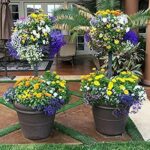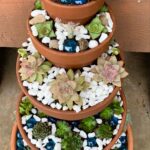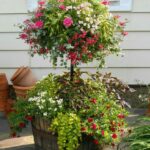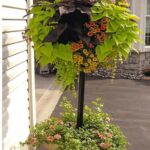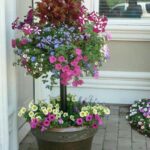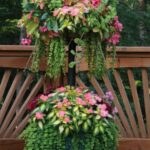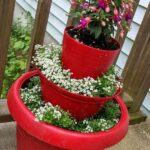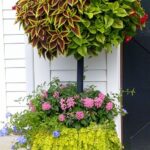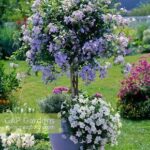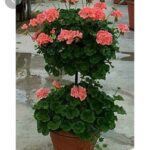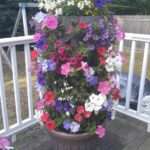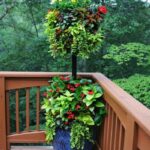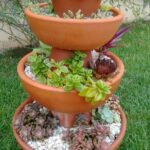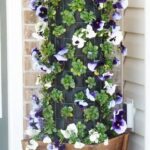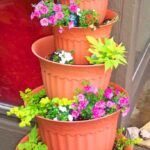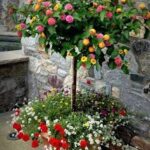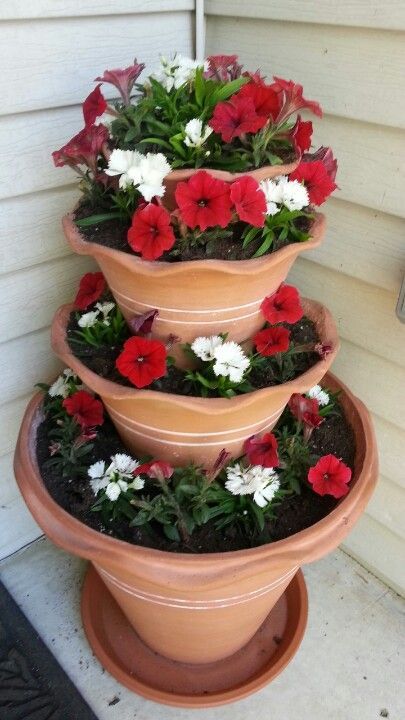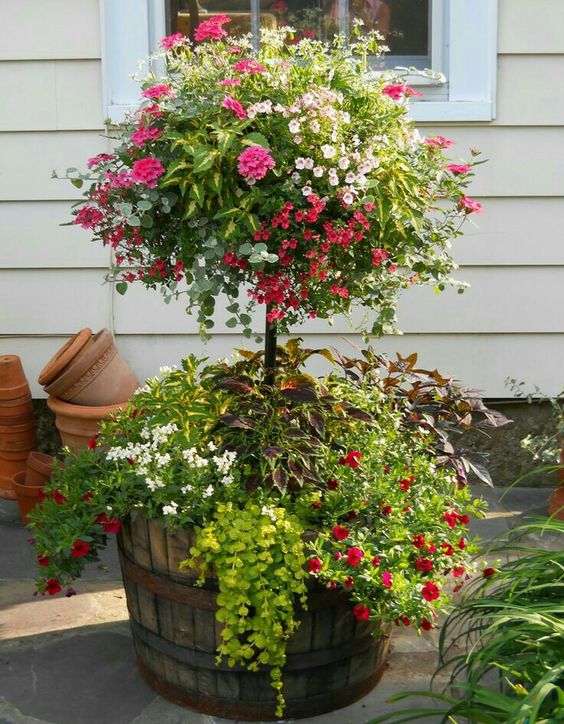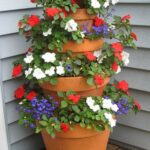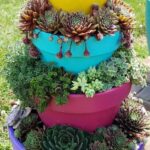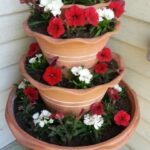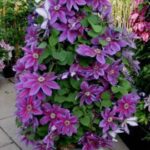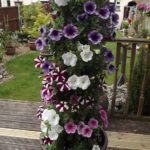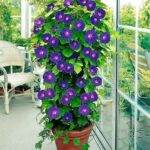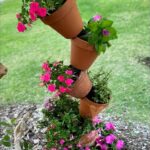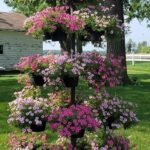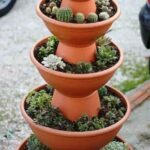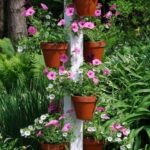Tower Planter Ideas: Vertical Gardening Solutions for Every Space
Tower planters are an innovative and space-saving gardening solution that allows you to grow a variety of plants vertically. They are perfect for urban gardeners, those with limited space, or anyone looking to add a unique and aesthetically pleasing element to their garden. Here’s an in-depth look at different tower planter ideas and how to create and maintain them.
1. Herb Tower Planters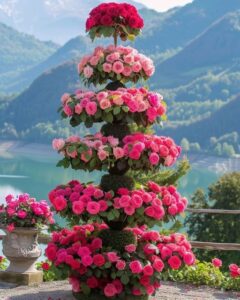
Herb tower planters are a fantastic way to grow your favorite culinary herbs in a compact space. Here’s how to create one:
- Choose Your Container: Select a stackable planter system or repurpose items like plastic bottles, PVC pipes, or old pots. Ensure they have adequate drainage.
- Plant Selection: Opt for herbs like basil, parsley, thyme, mint, and chives. These herbs thrive in vertical setups and provide a fresh supply for your kitchen.
- Layering: Start planting from the bottom, placing taller herbs at the top and shorter ones at the bottom. This ensures they all receive adequate sunlight.
2. Strawberry Towers
Growing strawberries vertically is a great way to maximize yield and keep the fruits off the ground, reducing the risk of rot and pests.
- PVC Pipe Tower: Use a large PVC pipe, drill holes at intervals, and fill it with soil. Plant strawberry seedlings in the holes and water regularly.
- Stackable Pots: Purchase a tiered planter system specifically designed for strawberries. These systems often include built-in irrigation channels for easy watering.
- Maintenance: Ensure your strawberry tower receives plenty of sunlight and water frequently, as vertical planters tend to dry out faster.
3. Flower Towers
Flower towers can add a burst of color and beauty to any garden space. Here are some ideas:
- Blooming Columns: Use a tall, cylindrical planter and plant cascading flowers like petunias, lobelia, and ivy geraniums. The flowers will spill over the sides, creating a stunning visual effect.
- Seasonal Display: Change your flower tower plants with the seasons. Use spring bulbs like tulips and daffodils, summer blooms like marigolds and zinnias, and fall flowers like chrysanthemums and pansies.
- DIY Options: Create a flower tower using chicken wire and a moss lining. Fill it with soil and plant flowers through the mesh for a rustic, DIY aesthetic.
4. Vegetable Towers
Vertical vegetable gardens are perfect for growing a variety of crops in a small footprint.
- Potato Towers: Use a wire cage or wooden frame, and layer soil and seed potatoes. As the plants grow, add more soil. Harvest by dismantling the tower and collecting the potatoes.
- Tomato Towers: Use a sturdy frame or cage to support the weight of tomato plants. Plant at the base and train the vines to grow upward, securing them to the structure as they grow.
- Mixed Veggie Towers: Combine different vegetables in a tiered planter. Plant lettuce, spinach, and radishes on the lower levels and climbing plants like beans or peas on the top tiers.
5. Succulent Towers
Succulents are ideal for vertical gardens due to their low water requirements and unique appearances.
- Succulent Wall: Create a succulent tower by attaching small pots or planting pockets to a vertical frame. Fill each pocket with a different succulent variety for a mosaic-like effect.
- Pallet Planter: Repurpose an old wooden pallet by adding shelves or planting pockets. Fill with soil and plant a variety of succulents for a rustic, vertical garden.
- Maintenance: Ensure good drainage and avoid overwatering. Succulents prefer dry conditions and minimal maintenance.
6. Hydroponic Towers
Hydroponic towers are a modern and efficient way to grow plants without soil, using nutrient-rich water solutions.
- Tower Gardens: Purchase a hydroponic tower system designed for home use. These systems typically include built-in water reservoirs and pumps for easy maintenance.
- DIY Hydroponics: Build your own hydroponic tower using PVC pipes, a water pump, and growing cups. This is a cost-effective way to start hydroponic gardening.
- Plant Choices: Leafy greens, herbs, and strawberries thrive in hydroponic systems. Ensure they receive adequate light and nutrients.
Fortunately, you can always take a look at already created compositions to get inspiration. For this reason, we have prepared some interesting options for planting the flower towers.
Flower mishmash
Decorate the flower tower? No problem! Simply select a few plants, preferably in different, contrasting colors, and plant them in loose groups. Is it really that simple? Not completely. The art is to create such a composition that the aesthetic mess does not turn into chaos.
You can achieve a good effect if you use different colors of a plant to decorate the flower tower. Such a combination will always look beautiful, regardless of the arrangement of the plant. It is advisable to group individual plant varieties together. In this way it will be possible to obtain a unique and aesthetic composition.
